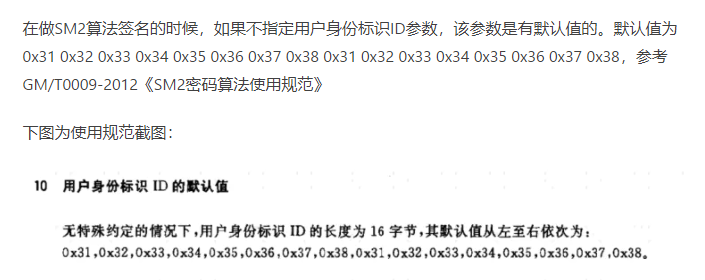最近时间在整SM2算法,在网上看到不少代码,基本都是使用BouncyCastle库,现在这个版本算比较好的拿来分享给大家。
首先引入包 Portable.BouncyCastle

完整代码见Gitee:https://gitee.com/xuzhongye/CryptoHelper/blob/master/src/CryptoHelper/SM2CryptoUtil.cs
public class SM2CryptoUtil { public SM2CryptoUtil(byte[] pubkey, byte[] privkey, Mode mode) { this.pubkey = pubkey; this.privkey = privkey; this.mode = mode; } public SM2CryptoUtil(string pubkey, string privkey, Mode mode = Mode.C1C2C3, bool isPkcs8 = false) { if (!isPkcs8) { if (pubkey != null) this.pubkey = Decode(pubkey); if (privkey != null) this.privkey = Decode(privkey); } else { if (pubkey != null) this.pubkey = ((ECPublicKeyParameters)PublicKeyFactory.CreateKey(Convert.FromBase64String(pubkey))).Q.GetEncoded(); if (privkey != null) this.privkey = ((ECPrivateKeyParameters)PrivateKeyFactory.CreateKey(Convert.FromBase64String(privkey))).D.ToByteArray(); } this.mode = mode; } byte[] pubkey; byte[] privkey; Mode mode; ICipherParameters _privateKeyParameters; ICipherParameters PrivateKeyParameters { get { var r = _privateKeyParameters; if (r == null) r = _privateKeyParameters = new ECPrivateKeyParameters(new BigInteger(1, privkey), new ECDomainParameters(GMNamedCurves.GetByName("SM2P256V1"))); return r; } } ICipherParameters _publicKeyParameters; ICipherParameters PublicKeyParameters { get { var r = _publicKeyParameters; if (r == null) { var x9ec = GMNamedCurves.GetByName("SM2P256V1"); r = _publicKeyParameters = new ECPublicKeyParameters(x9ec.Curve.DecodePoint(pubkey), new ECDomainParameters(x9ec)); } return r; } } public static void GenerateKeyHex(out string pubkey, out string privkey) { GenerateKey(out var a, out var b); pubkey = Hex.ToHexString(a); privkey = Hex.ToHexString(b); } public static void GenerateKey(out byte[] pubkey, out byte[] privkey) { var g = new ECKeyPairGenerator(); g.Init(new ECKeyGenerationParameters(new ECDomainParameters(GMNamedCurves.GetByName("SM2P256V1")), new SecureRandom())); var k = g.GenerateKeyPair(); pubkey = ((ECPublicKeyParameters)k.Public).Q.GetEncoded(false); privkey = ((ECPrivateKeyParameters)k.Private).D.ToByteArray(); } public byte[] Decrypt(byte[] data) { if (mode == Mode.C1C3C2) data = C132ToC123(data); var sm2 = new SM2Engine(new SM3Digest()); sm2.Init(false, this.PrivateKeyParameters); return sm2.ProcessBlock(data, 0, data.Length); } public byte[] Encrypt(byte[] data) { var sm2 = new SM2Engine(new SM3Digest()); sm2.Init(true, new ParametersWithRandom(PublicKeyParameters)); data = sm2.ProcessBlock(data, 0, data.Length); if (mode == Mode.C1C3C2) data = C123ToC132(data); return data; } public byte[] Sign(byte[] msg, byte[] id = null) { var sm2 = new SM2Signer(new SM3Digest()); ICipherParameters cp; if (id != null) cp = new ParametersWithID(new ParametersWithRandom(PrivateKeyParameters), id); else cp = new ParametersWithRandom(PrivateKeyParameters); sm2.Init(true, cp); sm2.BlockUpdate(msg, 0, msg.Length); return sm2.GenerateSignature(); } public bool VerifySign(byte[] msg, byte[] signature, byte[] id = null) { var sm2 = new SM2Signer(new SM3Digest()); ICipherParameters cp; if (id != null) cp = new ParametersWithID(PublicKeyParameters, id); else cp = PublicKeyParameters; sm2.Init(false, cp); sm2.BlockUpdate(msg, 0, msg.Length); return sm2.VerifySignature(signature); } static byte[] C123ToC132(byte[] c1c2c3) { var gn = GMNamedCurves.GetByName("SM2P256V1"); int c1Len = (gn.Curve.FieldSize + 7) / 8 * 2 + 1; int c3Len = 32; byte[] result = new byte[c1c2c3.Length]; Array.Copy(c1c2c3, 0, result, 0, c1Len); //c1 Array.Copy(c1c2c3, c1c2c3.Length - c3Len, result, c1Len, c3Len); //c3 Array.Copy(c1c2c3, c1Len, result, c1Len + c3Len, c1c2c3.Length - c1Len - c3Len); //c2 return result; } static byte[] C132ToC123(byte[] c1c3c2) { var gn = GMNamedCurves.GetByName("SM2P256V1"); int c1Len = (gn.Curve.FieldSize + 7) / 8 * 2 + 1; int c3Len = 32; byte[] result = new byte[c1c3c2.Length]; Array.Copy(c1c3c2, 0, result, 0, c1Len); //c1: 0->65 Array.Copy(c1c3c2, c1Len + c3Len, result, c1Len, c1c3c2.Length - c1Len - c3Len); //c2 Array.Copy(c1c3c2, c1Len, result, c1c3c2.Length - c3Len, c3Len); //c3 return result; } static byte[] Decode(string key) { return Regex.IsMatch(key, "^[0-9a-f]+$", RegexOptions.IgnoreCase) ? Hex.Decode(key) : Convert.FromBase64String(key); } public enum Mode { C1C2C3, C1C3C2 } }
踩坑记录:
1. 网上有不少教程也是使用 Portable.BouncyCastle库类,但SM2算法写了很多代码(我也没看懂,估计是自己计算椭圆曲线),但加密起来通过在线工具 有时可以解密有时又不行。估计也是使用旧版本。
2. 由于客户提供的密钥是pkcs8,我使用的在线工具是 https://aks.jd.com/tools/sec/。其他的在线工具不一定很解密。估计也是使用旧版本。
3. 客户签名后在我这里验签一直不通过,后来客户把 org.bouncycastle的jar包从1.58升级到1.62才解决这个问题,他们自己也说1.58的jar包签名的用1.62的jar包是验签不通过的。建议大家使用时都使用最新版本。
4. 签名和验签时 id 如果不传会使用默认值 1234567812345678,下面代码里面前两种写法是等效的
signTool.VerifySign(dataBytes, signBytes); //true
signTool.VerifySign(dataBytes, signBytes, Encoding.ASCII.GetBytes("1234567812345678")); // true
signTool.VerifySign(dataBytes, signBytes, new byte[] { }); // false

5. SM2签名就是 SM3WithSM2签名。